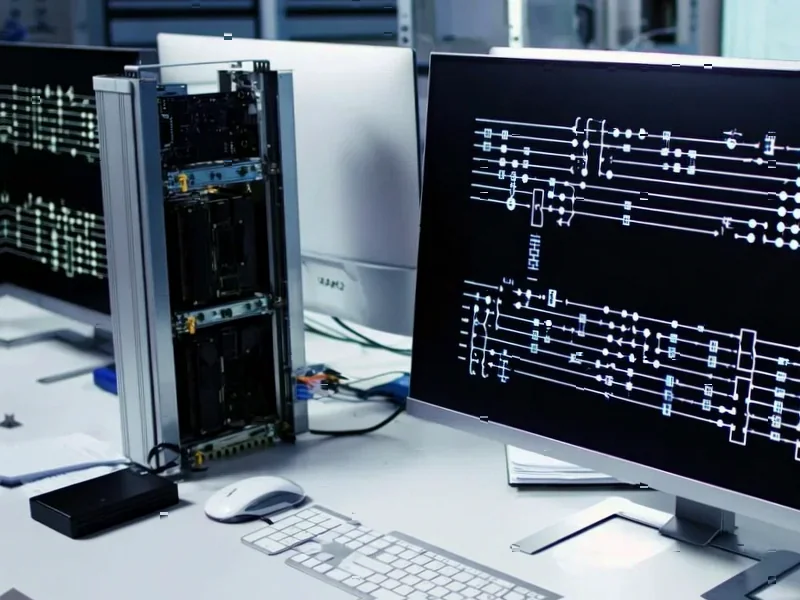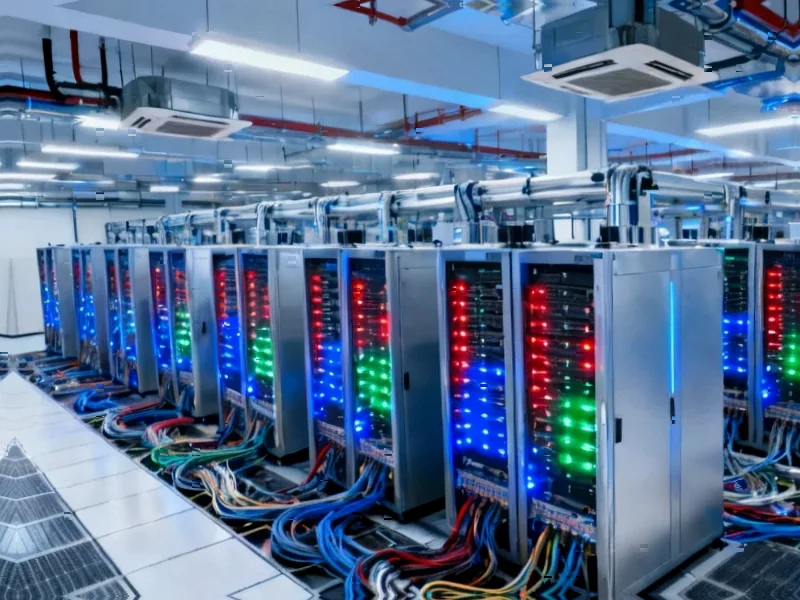According to CNBC, Loop Capital has maintained its buy rating on Nvidia while dramatically increasing its price target from $250 to $350 per share, representing 73% upside potential. Analyst Ananda Baruah projects that Nvidia will double its GPU shipments over the next 12 to 15 months, reaching 2.1 million units by the January 2026 quarter. Baruah describes this as the next “Golden Wave” of generative AI adoption, with Nvidia positioned at the forefront of stronger-than-anticipated demand. The analysis acknowledges potential risks including real estate and power constraints, as well as legislation that could impact generative AI revenue generation. This optimistic outlook comes as Nvidia shares have already rallied 51% year-to-date, with the stock gaining 2% in premarket trading following the announcement.
The Coming Infrastructure Crunch
While the shipment projections suggest explosive growth, they also highlight the massive infrastructure challenges facing the AI industry. Doubling GPU shipments to 2.1 million units means finding data center space and power capacity equivalent to several nuclear power plants’ output. Major cloud providers like AWS, Microsoft Azure, and Google Cloud are already scrambling to secure power purchase agreements and build specialized AI data centers. The real constraint won’t be Nvidia’s manufacturing capacity but rather the world’s ability to provide adequate power and cooling for these energy-intensive systems. Companies without established data center footprints may find themselves locked out of the AI race entirely.
Enterprise AI Adoption Realities
For enterprise customers, this projected growth signals both opportunity and concern. The doubling of shipments suggests that AI infrastructure will become more accessible but likely at premium prices, given Baruah’s expectation of expanding average selling prices. Large enterprises with dedicated AI budgets will benefit from increased availability, while mid-market companies may struggle to compete for resources. This dynamic could accelerate the trend toward AI-as-a-service models, where businesses rent AI capacity rather than building their own infrastructure. The timing is particularly crucial as companies are making strategic decisions about their AI roadmaps for the next three to five years.
Developer Ecosystem Evolution
The projected shipment growth will fundamentally reshape the developer landscape. With more GPUs available, we’ll likely see democratization of AI model training beyond the current elite tier of well-funded AI labs. However, this increased access comes with strings attached – developers will need to optimize for Nvidia’s specific architecture and CUDA platform, creating deeper lock-in effects. The ecosystem around Nvidia’s software stack, including frameworks like CUDA and libraries like cuDNN, will become even more critical. This concentration of power in one hardware architecture raises important questions about innovation and competition in the broader AI development community.
Geographic and Market Disparities
The distribution of these additional GPUs won’t be equal across regions or market segments. We’re likely to see concentrated benefits in AI hub regions like Silicon Valley, major European tech centers, and parts of Asia, while emerging markets may struggle to access the latest hardware. The power and real estate constraints mentioned in the analysis will disproportionately affect regions with less developed infrastructure. This could widen the AI divide between well-resourced corporations in developed markets and smaller players in emerging economies. The timing coincides with increased governmental focus on AI sovereignty and domestic AI capabilities worldwide.
Shifting Competitive Dynamics
Nvidia’s projected dominance through at least the Blackwell cycle creates challenging dynamics for competitors. While companies like AMD and Intel are making strides with their AI accelerators, the scale of Nvidia’s projected growth suggests they’re playing catch-up in a rapidly expanding market. The real competition may shift to the software layer, where companies are developing abstraction frameworks that can run across multiple hardware platforms. For end customers, this creates both vendor concentration risk and opportunities for multi-vendor strategies. The broader semiconductor industry will need to innovate not just on performance but on total cost of ownership and ease of integration.




